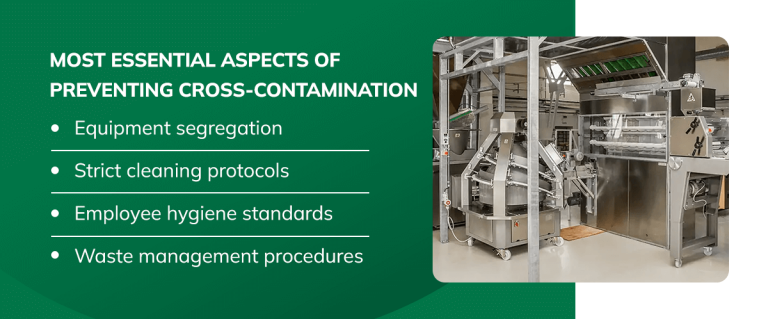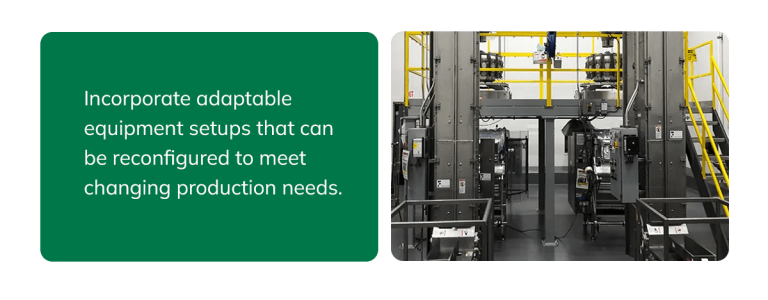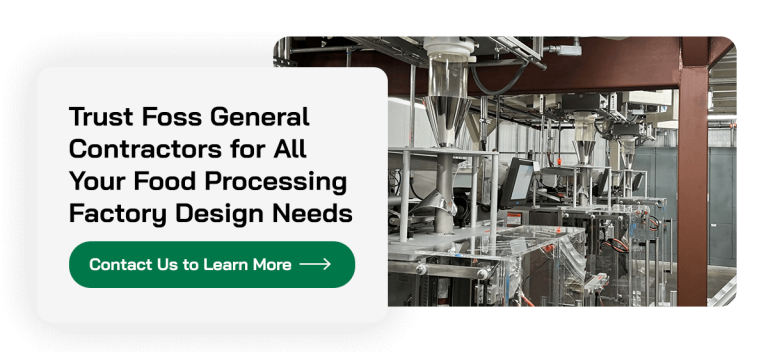As a plant operator, engineer or manager, your role in ensuring operational efficiency, safety and product quality cannot be overstated. However, designing a food processing factory that meets your quantity goals and quality standards can be challenging. How do you strike the right balance in facility size to meet both current needs and future production growth? What technologies can help you optimize your processes? What about hygiene?
Below, we discuss the most essential factors to consider when designing a food processing factory to help you streamline your operations and improve productivity while upholding industry standards.
5 Key Factors to Consider When Designing a Food Processing Factory
A proper food processing plant design requires you to take into account both current and future needs — consider how your industry may change over time and the challenges that may bring. At the same time, it’s still crucial to consider the fundamentals. Below are five of the most important design aspects to keep in mind.
1. Prevent Cross-Contamination
Cross-contamination occurs when harmful bacteria are transferred from one surface to another. In a food manufacturing plant, this can occur by using the same equipment for raw and cooked foods without properly cleaning it. It can also occur when:

- Employees handle raw ingredients and then touch cooked or ready-to-eat products without first washing their hands.
- Staff stores raw and cooked foods in close proximity or using the same storage containers.
- Surfaces, utensils or equipment aren’t cleaned properly between different production stages.
Preventing cross-contamination requires a strategic design that considers all the different practices in a factory. The most essential aspects involve:
- Equipment segregation: Implement dedicated equipment for raw and cooked food processing and design product lines with clear separation between processing zones.
- Strict cleaning protocols: Establish thorough cleaning protocols and schedules to ensure all machinery is properly sanitized between production runs.
- Employee hygiene standards: Enforce strict handwashing protocols and conduct regular training sessions on hygiene practices.
- Waste management procedures: Implement proper waste disposal practices that segregate different waste streams.
2. Prioritize Layout Efficiency
Efficient layout design is a key component to the seamless operation of a food processing factory. With the right layout, productivity, efficiency and safety are easier to achieve.
There are a few key areas to pay attention to when optimizing the layout of the factory:
- Workflow: Design the layout to facilitate a logical flow of personnel and materials. Consider the flow from raw ingredients to finished products to help minimize bottlenecks.
- Segregation: Establish separate zones for different production stages by incorporating physical barriers or color-coded zones.
- Safety: Integrate safety features such as emergency exits and first aid stations into the layout to ensure a safe and secure environment for the team.
3. Optimize the Space
When designing a food processing plant, space optimization and capacity planning are both essential considerations.
- Analyze food production plant requirements: Start by conducting a thorough analysis of production needs, taking into account seasonal variations and peak periods to determine the optimal capacity requirements.
- Select equipment for efficiency: Choose equipment with the appropriate capacity to handle production volumes efficiently and minimize downtime. You’ll also need to optimize space and workflow for seamless operations.

In addition, it’s important to understand both the current and future needs of the operation. Incorporate adaptable equipment setups that can be reconfigured to meet changing production needs. This approach will help you design a space that works for today’s needs while also being flexible for future goals.
4. Consider Automation
Many automation technologies are available to support efficiency in food processing plants. For example:
- Automated guided vehicles: These vehicles transport different products and materials throughout the facility and can help improve workflow efficiency. For example, they can move items between mixing stations, buffer storage areas and production lines.
- Automated packaging equipment: These machines are preprogrammed to fill, seal and label containers. They can operate at high speeds and increase productivity.
- Robotics: Food processing facilities can use robots to help with different tasks such as sorting, packaging, and picking and placing materials. Introducing robots can help reduce labor costs while improving productivity and efficiency.
- Vision systems: These systems help with quality control by inspecting products and ensuring only items that meet specific standards proceed through the production line.
If you decide to invest in automation, allow ample space for your new systems. For example, automated conveyor systems that transport products within a facility and reduce manual handling require sufficient space to operate. They may also require manual handling at certain stations. Engage with key departments to understand their specific needs and challenges so you can help develop a space that works for them.
5. Adhere to Regulatory Standards
Understanding and incorporating regulatory requirements into the design process will help you create a factory that upholds legal standards.
- Review regulatory requirements from authorities such as the United States Department of Agriculture, Food and Drug Administration, and state and local health departments.
- Align the facility design with relevant regulatory guidelines.
- Establish a documentation process that maintains accurate records of compliance.
- Provide ongoing training for staff members on regulatory compliance.
Additional Tips for Designing a Food Processing Plant
Many different factors go into designing a food processing plant, and each can significantly impact operational efficiency and product quality. Here are a few additional tips you can use to enhance your factory:
- Implement climate control and HVAC systems: As the food moves through each phase of production, it must remain temperature-controlled — climate systems are essential.
- Allocate space for packaging and shipping: Before the food is sent out to the next stage in the supply chain, it needs to be packaged and shipped. Design spaces specifically for both phases.
- Select processing equipment: What processing equipment do you need? Consider the type of machinery you require to help you meet your production goals. In addition, the size, dimensions and technology of each piece of equipment should be a focus.
- Consider refrigeration capabilities: Invest in refrigerators that meet the specific temperature requirements for each phase of production.
- Keep it simple: Design a layout that promotes a logical flow of materials and processes while avoiding unnecessary steps that can create bottlenecks.
- Continuously review: Conduct a regular audit and assessment of existing processes to identify areas of improvement and optimization.

Trust Foss General Contractors for All Your Food Processing Factory Design Needs
Creating an efficient food processing plant requires careful planning and expertise. Foss General Contractors can help you in designing a food processing plant with our premier industrial construction services.
Our team has years of experience in industrial contracting and general contracting and can help with every step of the process, from design to final build. We offer fast, efficient and transparent service tailored to your specific requirements.
Contact us today to learn more about how we can help you design the right facility for your needs.
